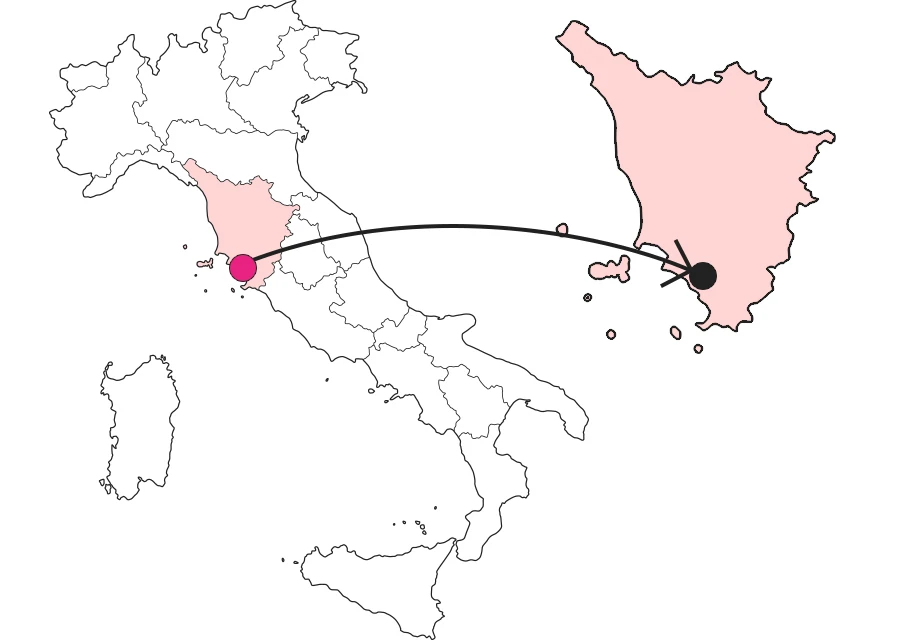







Pitigliano, a village carved in time
In the Fiora Valley, from the Etruscans to the Grand Duchy, a novel three millennia long



Where

What it is and where it is
A recommended route to Pitigliano is from the Argentario coast up the Maremmana state road toward Orvieto, passing through the Albegna and Fiora valleys. The village appears on a tufa cliff carved by three streams. The site's uniqueness attracted man in ancient times and was at the origin of the fortunes of Etruscan and Roman Pitigliano. Houses lined up on the cliff, as if carved into the volcanic rock, protect a village that is nothing short of picturesque.
Why it is special
In the Middle Ages, the Orsini made Pitigliano the capital of their county and equipped it with a fortress. Around it is a system of three squares, the last of which, acts as a trait d 'union with the village proper, with three almost parallel streets and a dense comb of alleys. Within this web are two very characteristic realities: the Capisotto district, at the top of the cliff, around the church of Santa Maria, and the Ghetto, with the Synagogue and the buildings occupied by the ancient Jewish community.
Not to be missed
The first affair worth exploring in depth is that of the Etruscans, who come alive in the artifacts of the archaeological museum in the Orsini Palace and in the evocative path that runs out of doors through a rocky necropolis. The museum collection ranges from primitive pottery to spectacular bucchero vases decorated in low relief. Interesting in terms of current events is the section devoted to the problem of clandestine excavations, still practiced today, and the production of fakes, in their own way an art form.
A bit of history
The diaspora of the Jewish people has been fueled over the centuries on several occasions by decrees of expulsion from this or that nation. Sporadically, however, islands of tolerance persisted that attracted refugees. Such was the case for Pitigliano, which at the time of the Grand Duchy of Tuscany accentuated this role of 'city-refugee' so much so that it earned the appellation 'Little Jerusalem.' The memory of this reality remains alive thanks to the establishment of the Museum of Jewish Art and the path that connects the most characteristic places of the Ghetto.
Curiosities
The presence of the Jewish community has uniquely influenced the gastronomic tradition of Pitigliano. In fact, there is talk of 'goym cuisine,' or 'cuisine of the gentiles,' in the meaning that this term takes to indicate people outside the Jewish religion. A Maremma cuisine, therefore, 'contaminated' by the customs of the newcomers. Typical dishes of this gastronomic fusion are sheep ricotta tortelli covered with sugar and cinnamon, lamb a buglione, and the classic stuffed artichoke.
Enter the Map of Italy's Undiscovered Wonders and find treasures where you least expect it... Inspire, Recommend, Share...
The Map thanks:
In the Community
Enter the Map of Italy's Undiscovered Wonders and find treasures where you least expect it... Inspire, Recommend, Share...
Where


